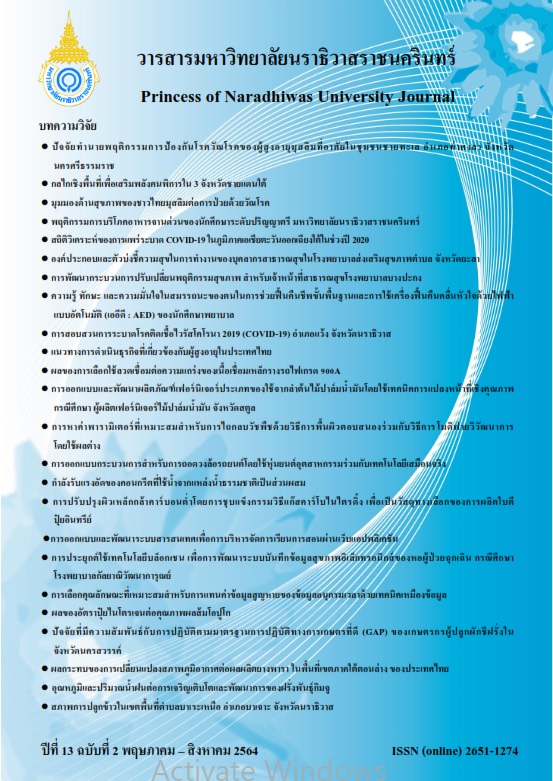Surface Improvement on Low Carbon Steel with Gas-carbonitriding Hardening Process as an Alternative Material used in Producing Blade for Organic Fertilizer Grinder
Keywords:
Low carbon steel, Organic fertilizer, Gas-carbonitriding hardeningAbstract
The research objective was to study the method of applying gas-carbonitriding hardening process to improve the mechanical properties of AISI 1020 low carbon steel for using as a production material for producing blade for organic fertilizer grinder. The mechanical properties of agricultural equipment were examined, and the equipment was applied with a gas-carbon nitriding hardening method to increase wear resistance of the impact blades. The testing process was done with 21 pieces of blade as follows: (1) 7 pieces of non-hardened blades, (2) 7 pieces of gas-carbonitriding harden blades, 2 hours with carbon potential (CP) at 1.10% temperature at 860°C, and (3) 7 pieces of gas-carbonitriding harden blades, 2 hours with carbon potential at 1.10%, temperature at 880°C. The Micro Vicker hardness test (HMV) was applied to measure the hardness of the specimen. The hardness was measured every 0.1 mm for 12 points. The testing pieces with the highest surface hardness at 0.1 mm, using the hardening 2 hours, CP at 1.10%, temperature at 860°C and 880°C, had the hardness measure at 720 HV and 730 HV, respectively. Each blade must pass approximately 5 tons of organic fertilizer to test its wear resistance on the impact. The results of the research revealed that forging impact blades that had not been hardened had a wear 5 mm, and the impact blades that had been hardened by gas carbonitriding using hardening 2 hours, temperatures at 860°C and 880°C, had a wear of 1.3 mm and 0.5 mm, respectively.
References
Carvajala, L. (2017). Monitoring Heat Treatments in Steels by a Non-Destructive Ultrasonic Method, Materials Research
Ian, H. & Philip, S. (2017) Tribology Friction and Wear of Engineering Materials, Retrieved October 23, 2020 From https://www.amazon.com/Tribology-Friction-Wear-Engineering-Materials-ebook/dp/B06ZZ1MLP4
Kumar, A. (2016) Heat Treatment Parameter Optimization Using Taguchi Technique. International Journal of Scientific Research and Education, 4(10).
Markham, E. R. (2016). Hardening and Tempering, Retrieved October 24, 2020 From https://www.amazon.com/Hardening-Tempering-R-Markham/dp/1473328764
Purwaningrum, Y. (2018) Heat Treatment, Mechanical Properties and Microstructure of T-Joint Steel Arc Welded. Applied Mechanics and Materials Submitted, 876, 36-40.
Rajan, T. V. & Sharma, C. P. (2019). Heat Treatment: Principles and Techniques. Retrieved October 22, 2020 from https://metallurgybookshub.blogspot.com/2019/04/heat- treatment-principles-and.html
Tolouei -rad, M. & Lichter, E. (2016) The Heat Treatment Analysis of E100 Case Hardening Steel. Journal of Engineering Science and Technology, 11(3), 407 – 415.
William E. (2017). Heat treatment Master Control Manual, Retrieved October 24, 2020 From https://doi.org/10.3139/9781569904862
Zheng, H. (2019). Effect of Heat Treatment parameters on the microstructure of quenching - partitioning-tempering steel, Retrieved October 23, 2020 From https://www.tandfonline.com /doi/full/10.1080/25787616.2018.1560168?src=recsys
Zhou, M. (2017) Bainitic Transformation and Properties of Low Carbon Carbide-Free Bainitic Steels with Cr Addition. Metals Properties of Medium Carbon Steel, Journal of Minerals and Materials Characterization and Engineering, 11(2), 143-152.




